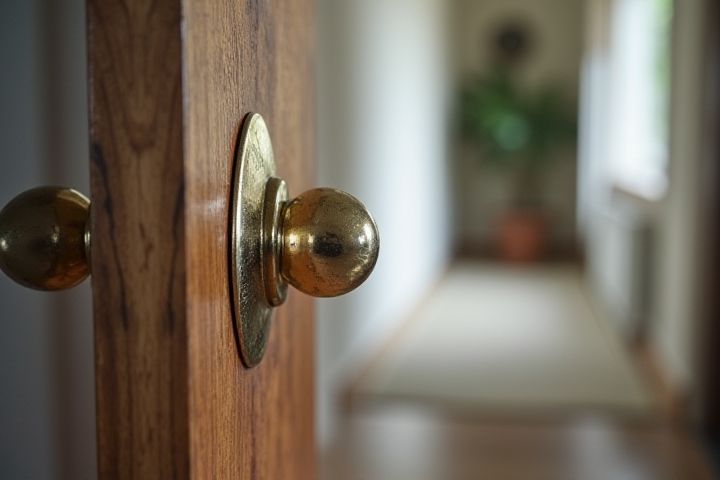
During a house walkthrough, focus on inspecting structural integrity, including the foundation, walls, and roof. Examine the electrical system, ensuring outlets, light switches, and circuit breakers are functional and up to code. Pay particular attention to plumbing; check for leaks, water pressure, and the condition of sinks, toilets, and water heaters. Assess windows and doors for functionality, seals, and potential drafts, as well as any signs of moisture or mold. Lastly, evaluate the overall safety features, including smoke detectors, carbon monoxide detectors, and the presence of fire exits.
What To Check In A House Walkthrough
Structural integrity and foundation
During a house walkthrough, closely examine the foundation for visible cracks or uneven settling, which can indicate potential structural issues. Inspect load-bearing walls for signs of bowing or bulging, as these may compromise the home's stability over time. Look for any water damage or mold growth in the basement or crawl spaces, as moisture can severely weaken the integrity of the structure. Pay attention to doors and windows; difficulty in opening or closing can suggest shifting foundations or structural problems.
Roof condition and any leaks
During a house walkthrough, closely examine the roof's condition for any visible signs of wear or damage, such as cracked, missing, or curling shingles. Inspect the flashing around chimneys and roof vents for potential leaks, which can lead to water damage and decreased energy efficiency. Pay attention to the interior ceilings and walls for any water stains, mold, or discoloration, indicating possible leaks. Don't forget to evaluate the gutters and downspouts to ensure they are clear and functioning properly, as clogged drainage can lead to roof problems.
Electrical system functionality
During a house walkthrough, evaluate the electrical system by inspecting outlets, switches, and circuit breakers for signs of wear or damage. Test each outlet with a voltage tester to ensure they are functioning correctly and up to code. Check for proper grounding and the absence of flickering lights, which may indicate wiring issues. Finally, confirm that the electrical panel is clearly labeled for each circuit, ensuring safe and easy access in case of emergencies.
Plumbing fixtures and water pressure
During a house walkthrough, closely examine plumbing fixtures, such as faucets, showerheads, and toilets, for signs of leaks or corrosion. Check that all fixtures operate efficiently and assess water pressure by turning on the taps; ideal pressure should range between 40 and 60 psi. Inspect under sinks for moisture or water stains, which could indicate plumbing issues. Ensuring all drains function properly without slow drainage is essential for a home's plumbing health.
HVAC system operation
During your house walkthrough, ensure the HVAC system operates efficiently. Check the thermostat settings and confirm that the heating and cooling respond appropriately; ideally, temperature changes should occur within a few minutes. Inspect the air filters for cleanliness, with a recommendation to replace them every 1-3 months. Additionally, listen for unusual sounds from the unit, as these could indicate maintenance issues needing attention.
Presence of pests or mold
During your house walkthrough, pay close attention to signs of pests, such as droppings, urine stains, or nesting materials found in corners or hidden spaces. Inspect areas prone to moisture, such as basements, bathrooms, and kitchen corners, for any signs of mold, including dark spots or a musty odor. Check around windows, doors, and plumbing fixtures for possible leaks that can promote mold growth. You should inquire about the property's pest control history and any previous mold issues to ensure your potential new home is safe and healthy.
Condition of windows and doors
During a house walkthrough, inspect all windows and doors for any signs of damage, such as cracks or broken seals, which can impact energy efficiency. Check for smooth operation; all windows and doors should open, close, and lock easily, indicating proper installation and maintenance. Look for water stains or signs of mildew around frames, which may suggest potential leaks or inadequate weatherproofing. Ensure that screens are intact and that hardware, such as handles and locks, functions properly, ensuring both security and usability in your new home.
Quality of flooring and walls
Inspect the flooring for signs of damage, such as scratches, cracks, or uneven surfaces, which may indicate subpar installation or wear. Pay attention to the material; hardwood, laminate, tile, or carpeting can significantly impact maintenance and aesthetics. Walls should be examined for cracks, peeling paint, or damp spots, as these could suggest structural issues or past water damage. Ensure that doors and windows open and close smoothly, which reflects the overall quality of the construction and finishing work in your potential new home.
Kitchen and bathroom appliances
During a house walkthrough, inspect kitchen appliances such as the refrigerator, oven, and dishwasher for functionality. Check for the age of appliances, as newer models tend to have better energy efficiency ratings, often ranging from A to A+++. In the bathroom, examine fixtures like the showerhead, faucets, and toilets for leaks or signs of wear, ensuring they operate smoothly. Pay attention to the condition of any built-in appliances, verifying their warranties and understanding installation requirements which could impact your moving plans.
Smoke detectors and carbon monoxide alarms
During a house walkthrough, ensure that smoke detectors are installed in key areas, including bedrooms and hallways, as well as on every level of the home. Check that each unit is functioning properly by pressing the test button; ideally, replace batteries every six months. Look for carbon monoxide alarms near sleeping areas and on every level, with a recommended replacement every five to seven years. Mark your calendar to conduct regular maintenance checks, as these life-saving devices play a crucial role in your family's safety.
